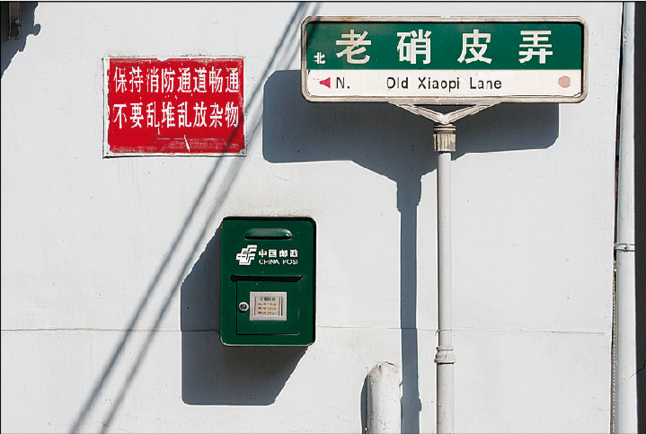A database for the city's old street names
 |
|
Lao Xiaopi Nong, or leather processing lane, is one of the many old road names in Shanghai. gao erqiang / China Daily |
The Shanghai municipal government is currently conducting a survey as part of efforts to create a database containing old street names that have been in the city for hundreds of years.
This survey by the Urban Planning, Land and Resources Bureau is being carried out in response to the proposal submitted by the Shanghai Association for Science and Technology during the city's "Two Sessions" at the beginning of this year. According to the association, some of the old streets in the city date back to the Ming Dynasty (1368-1644).
"While a large number of the old streets have lost their historic appearances because of the acceleration of urbanization, their names have mostly been preserved. These names represent history and memories," said the association in the proposal.
The association suggested to the historic preservation department that old streets could be treated like relics. For example, commemorative plaques and art sculptures could be set up beside street name plates to showcase the significance of the road.
The association estimates that there are more than 20 streets with special historic names that need to be properly preserved. The Lannidu Road, which means "muddy road", is one such example.
The road is presently located in the center of the Lujiazui financial area where there used to be tidal flats more than a century ago. The road was named as such because many of the people who fished in this area in the past often had their shoes stuck in the mud.
The name for Fahuazhen Road, located in the western part of Shanghai, was derived from the Fahua Temple built more than 1,000 years ago. Back during those ancient times, the area where the road now stands was a river. It was not until 1958 that the river was reclaimed into a road.
Yaoshui Alley, which means "chemical reagents alley", is today situated adjacent to the Suzhou Creek in Putuo district. This street name came about in 1907 when a British manufacturer moved its plant which produced hydrochloric, sulphuric and nitric acids from Jiangsu province to Shanghai.
In 2005, the municipal government of Shanghai announced a list of 64 streets that would never be expanded in order to preserve its historic look.
In conjunction with the plan of setting up a database of old street names, the local government will also shoot a series of documentaries to commemorate the city's history.









